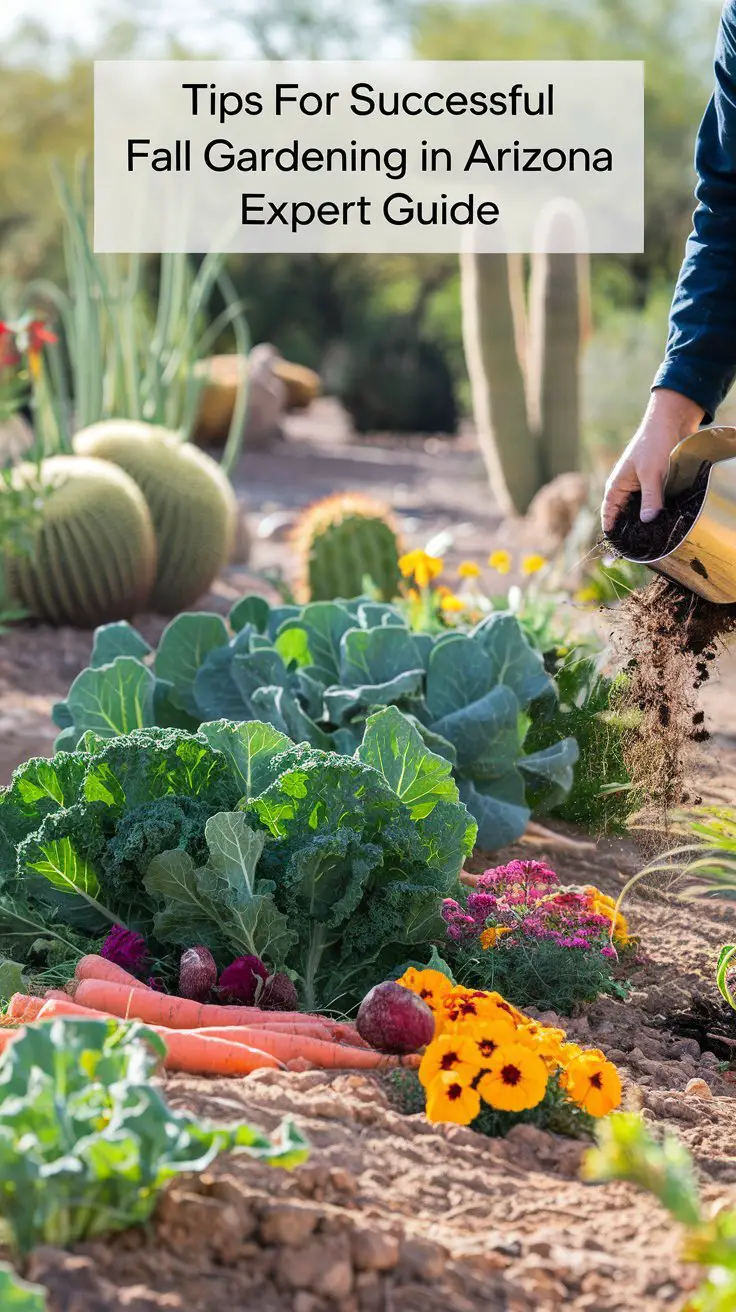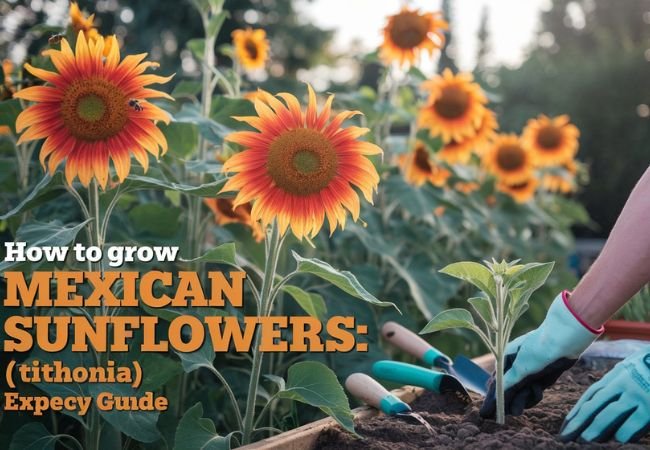Master fall gardening in Arizona with expert tips on plant selection, timing, and care. Learn how to navigate the unique desert climate for a thriving autumn garden.
Fall gardening in Arizona offers a second spring-like growing season as temperatures cool from scorching summers. The key to success is starting your fall garden in late August to early October, choosing heat-tolerant varieties, and providing adequate shade and water management for young plants while temperatures remain high.
As a certified Master Gardener with over 20 years of experience in Arizona’s challenging climate, I’ll guide you through creating a thriving fall garden in our unique desert environment.
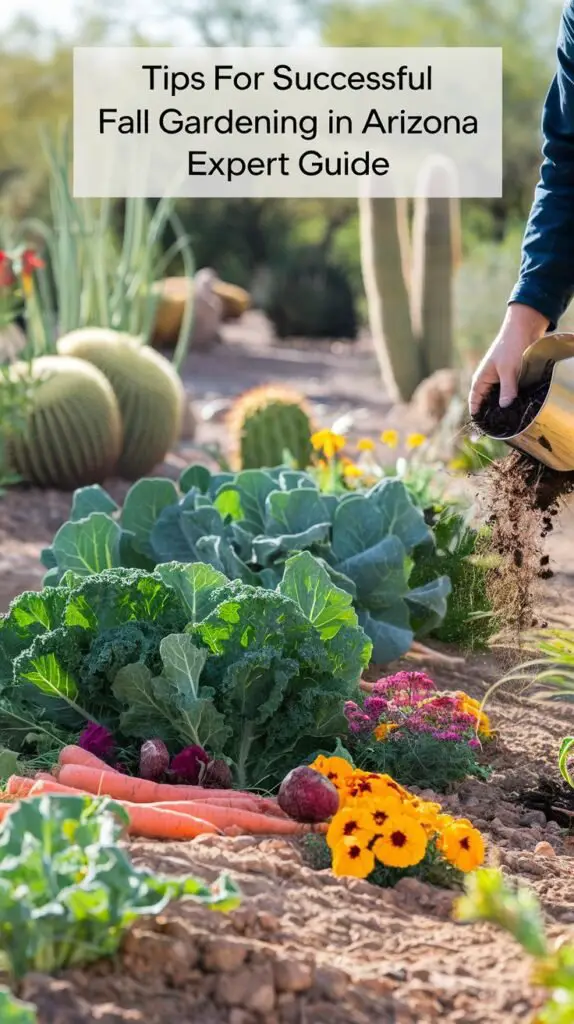
Quick Facts About Arizona Fall Gardening
- Growing Season: September through February
- Average Fall Temperatures:
- September: 82-100°F (28-38°C)
- October: 69-88°F (21-31°C)
- November: 56-75°F (13-24°C)
- First Frost Date: Varies by region
- Phoenix: December 15
- Tucson: November 25
- Flagstaff: October 1
Why Garden in Arizona’s Fall?
- Milder temperatures ideal for many crops
- Fewer pest problems
- Lower water requirements
- Extended growing season for cool-season vegetables
Timing Your Fall Garden
When to Start Seeds
Different plants need different timing:
- Late August – Early September:
- Broccoli
- Cabbage
- Cauliflower
- Brussels sprouts
- Mid-September:
- Lettuce
- Spinach
- Carrots
- Beets
- Late September – Early October:
- Peas
- Radishes
- Turnips
The University of Arizona Cooperative Extension offers detailed planting calendars for different regions of the state.
Best Plants for Arizona Fall Gardens
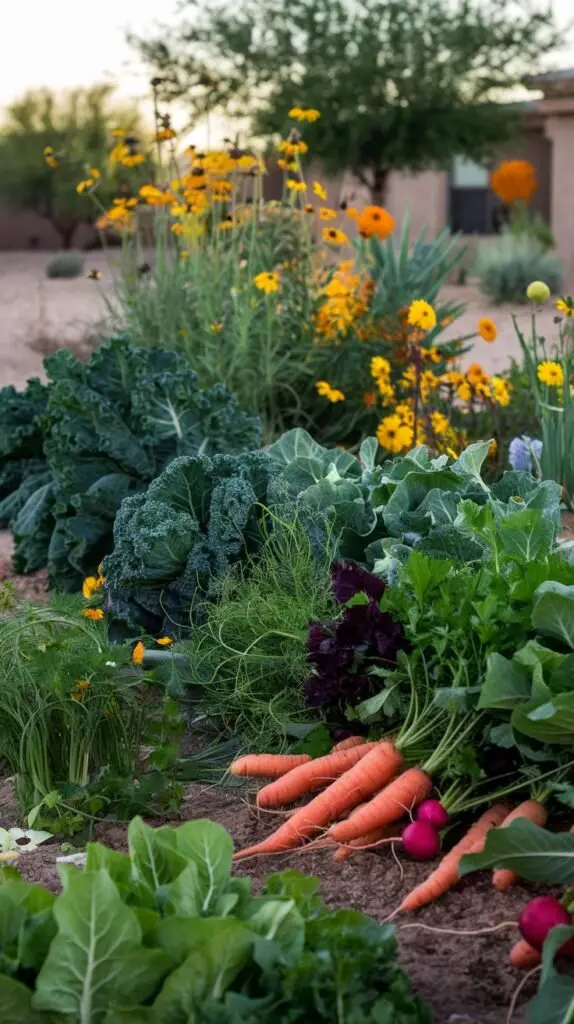
Vegetables
- Leafy Greens:
- Kale
- Swiss chard
- Arugula
- Mustard greens
- Root Vegetables:
- Carrots
- Beets
- Radishes
- Turnips
- Brassicas:
- Broccoli
- Cauliflower
- Cabbage
Herbs
- Cilantro
- Parsley
- Dill
- Sage
Flowers
- Native wildflowers like:
- Desert marigold
- Penstemons
- Globe mallow
Soil Preparation Tips
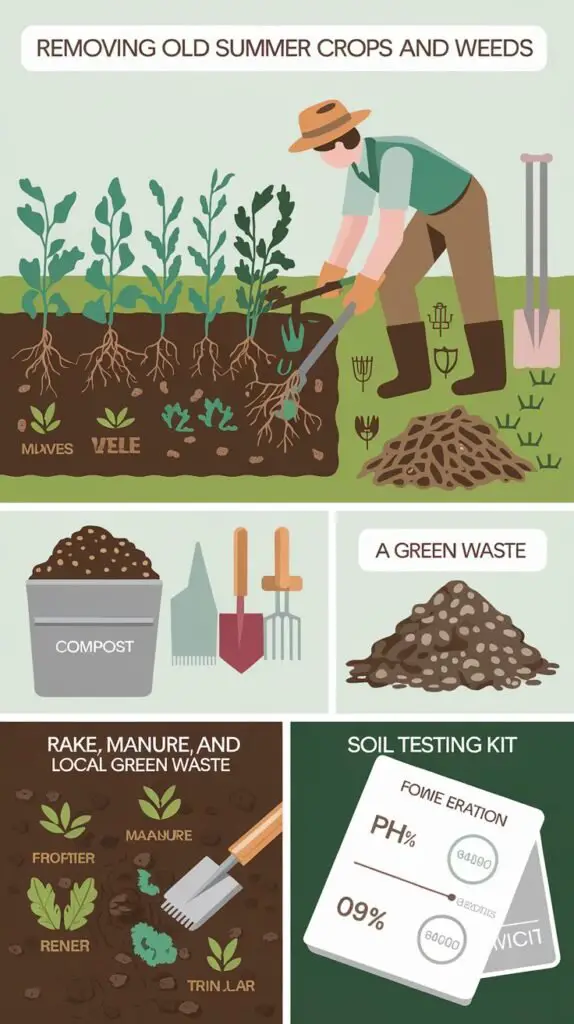
Before Planting
- Remove summer crops and weeds
- Add organic matter:
- Compost
- Aged manure
- Local green waste compost
Soil Testing
- Get a soil test through the Arizona Master Gardener Program
- Adjust pH and nutrients based on results
Watering Strategies
Early Fall (September)
- Water deeply and frequently while temperatures remain high
- Use drip irrigation for efficiency
Late Fall (October-November)
- Reduce watering frequency as temperatures cool
- Monitor soil moisture with a moisture meter
Pro tip: Apply mulch to retain moisture and regulate soil temperature
Managing the Heat
Shade Techniques
- Shade cloth: 30-50% shade until temperatures cool
- Companion planting: Use taller plants to shade seedlings
- Row covers: Protect from intense sunlight
Timing Your Activities
- Plant in the evening to minimize transplant shock
- Water early morning or evening
- Check local weather forecasts for extreme heat warnings
Pest Management in Fall
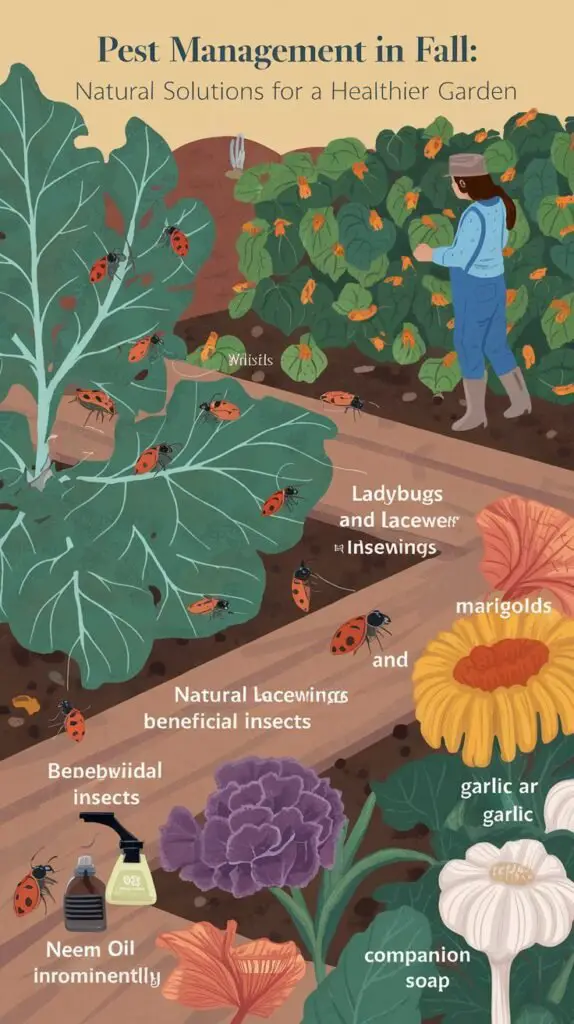
Common Fall Pests
- Aphids
- Cabbage loopers
- Whiteflies
Natural Control Methods
- Encourage beneficial insects
- Use companion planting
- Apply neem oil or insecticidal soap
For organic pest control guidance, consult the Xerces Society.
Frost Protection
Methods
- Row covers
- Cold frames
- Water walls
When to Protect
- Watch for frost warnings from the National Weather Service
- Be prepared to cover plants when temperatures drop below 40°F (4°C)
Harvesting Tips
When to Harvest
- Leafy greens: When leaves are young and tender
- Root vegetables: When they reach desired size
- Brassicas: Before flower buds open
Storage
Learn proper vegetable storage techniques from the National Center for Home Food Preservation.
Common Challenges and Solutions
Challenge 1: Hot Soil
Solution: Use light-colored mulch and shade cloth
Challenge 2: Irregular Germination
Solution: Pre-soak seeds and provide consistent moisture
Challenge 3: Pest Pressure
Solution: Practice integrated pest management
Planning for Winter
Extend Your Season
- Use frost protection methods
- Choose cold-hardy varieties
- Consider a greenhouse or cold frame
Learn about season extension from the Arizona Community Garden Association.
Success Stories
“I moved from Michigan and thought gardening in Arizona would be impossible. After learning to work with our unique seasons, I now grow more vegetables than ever!” – Sarah, Phoenix Master Gardener
Remember, successful fall gardening in Arizona is about timing, appropriate plant selection, and understanding our unique climate. Don’t be discouraged if everything doesn’t work the first time – garden journals and experience are your best teachers.
For more gardening tips and plant care guides, visit usagardenhub.com.

